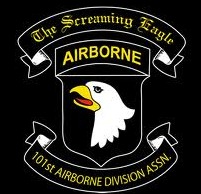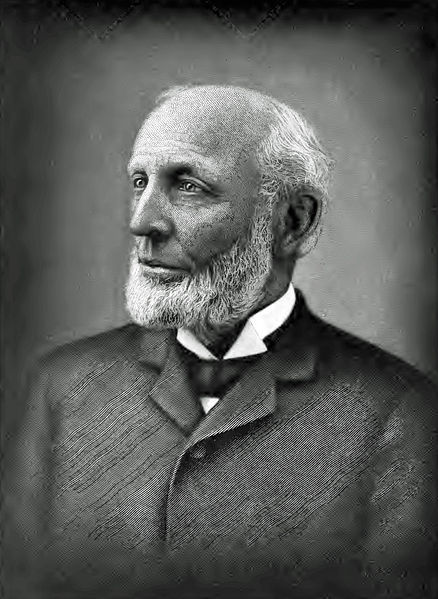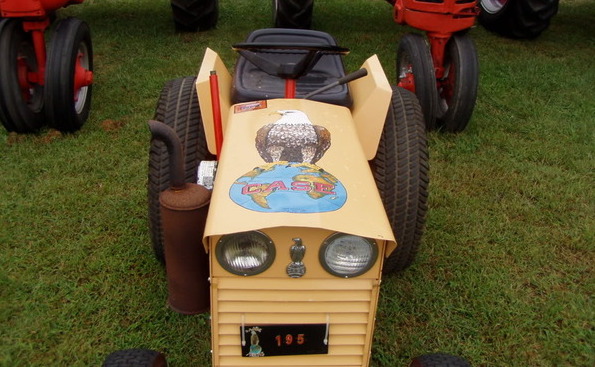|
A Brief Surprising and Amazing History of 'Old Abe'
( Copy of original live portrait )
* * * * *
The Case Eagle - 'Old Abe' (a tame bald eagle) - is a well known industrial trade-mark throughout the main streets and countryside's of thousands of cities and hamlets in the United States and civilized countries the world over. King of the air, the eagle is an established symbol in American life
The story begins in the early spring of 1861. In the wild north woods of Wisconsin, along the historic Flambeau River, the Chippewas Indians had
Chief Sky, leader of the Chippewas, carried the eaglet back to Jim Falls, Wisconsin, as a pet. There, Thunder of Bees, son of the Chief, bartered the bird for a bushel of corn to a settler named Daniel McCann. Remarking on the incident many years later, a poetic commentator wrote: "And for this paltry sum was a noble bird sold from freedom to captivity; from barbarism to civilisation; from the murmur of pines to crash of battle; from obscurity to fame."
McCann took the bird to Eau Claire, Wisconsin, and briefly kept it as a family pet. Growing eagles make poor pets - even for the hardy children of pioneer settlers. Caged inside a modified oaken cask, the bird grew larger and quickly became too expensive to feed, and when the bird reached enough growth to attempt escape, McCann was determined to sell her. The eagle was already magnificent in appearance and displaying much spirit.
During those early days of the War Between the States, men were being recruited for service. Soldiers have a weakness for mascots, so McCann took his bargain bird directly to the nearest camp. McCann actively sought to sell, the as yet unnamed bird, to the many units of Wisconsin troops passing through the area enroute to their muster sites.
At Eau Claire, Wisconsin, Company C of the Eighth Wisconsin Regiment was being organised under the command of Captain John E. Perkins. The men of the Company admired the eagle, and after many unsuccessful attempts to rid himself of the bird, McCann made a sale for $2.50 to Capt. Perkins, and the Eau Claire outfit had a mascot.
They dubbed the eagle 'Old Abe' after their commander-in-chief,
A little later, when Company C joined the Eighth Regiment at Madison, 'Old Abe' became the mascot for the entire outfit. She was inducted into military service in a special ceremony, which included placing red, white and blue ribbons around her neck and a rosette of similar colors on her breast. The Regiment purchased, a special shield-shaped perch, on which she was carried on in regimental parades and given a place of honor, in the very center of the front ranks, alongside the flag.
'Old Abe', sworn into service, and proven to be every inch a soldier, listening to and obeying orders, noting the time most accurately, always after the first year giving heed to "attention," insisting upon being in the thickest of the fight and when her comrades, exposed to great danger from the terrible fire of the enemy, were ordered to lay down, she would flatten herself upon the ground with them, rising when they did, and with outspread pinions soar aloft over the carnage and smoke of the battle.
When the canons were pouring forth destruction and death, above the roar and thunder of the artillery rose her wild shrill, battle-cry of freedom. 'Old Abe' was always restless before the march to the encounter, but after the smoke of the battle field had cleared she would doff her soldier-like bearing, and with wild screams of delight would manifest her job of victory; but if defeat was the result her discomfort and deep sorrow were manifested by every movement of her stately but drooping figure.
Throughout the bitter, unhappy civil war struggle, 'Old Abe' went through thirty-eight battles and skirmishes, and the Eighth Regiment became known as the Eagle Regiment. With her wild piercing cry, she was familiar to men on both sides of the fight and gained equal respect as one of the brave and courageous fighters.
'Old Abe's remarkable loyalty was known to all and on occasions she broke her bonds and winged swiftly away and disappeared. After a short interval of freedom, the kingly bird, her wings spread to a magnificent six and a half feet, would swoop silently down to her perch beside the flag.
Ed Homiston was the Big Bird's best known keeper and he never lost faith in her when she escaped her tethers.
Their enlistments having expired, the men of the 8th Wisconsin were mustered out of federal service in late-1864. The 8th Wisconsin Volunteer Infantry Regiment was no more. On Sept. 26th, 1864, a
After Wisconsin took possession of 'Old Abe', state officials classified her as a “War Relic” and created an “Eagle Department” in the Capitol building, which included a two room “apartment,” a custom bathtub for 'Old Abe', and a caretaker.
In 1865 an enterprising Chicagoan, capitalizing on 'Old Abe's fame, sought to enlist her in support of the United Sanitary Commission's efforts to provide aid and comfort to wounded Veterans. Thus the "Army of the American Eagle" was formed. Children were "enlisted" to sell paper photographs of 'Old Abe' in much the same way that schools raise funds today. Proceeds from the sale of these photographs went to benefit local veteran's charities.
'Old Abe' appeared in many parades and reviews and received the cheers of the nation. She was quartered in the State House at Madison, Wisconsin, to spend her mature years and was visited by thousands annually. Her last public appearance was in 1880 at a great reunion of veterans held in Milwaukee. There she shared the platform with General Grant.
In the big parade 'Old Abe' was a figure of magnificent dignity. When the band struck up a stirring march, she answered with her celebrated screaming battle cry.
'Old Abe' lived out the remainder of her life in an aviary in the Capitol building. The very next winter in 1881, a fire broke out in the basement of the capitol where paints and oils were stored near 'Old Abe's aviary.
Almost suffocated by heat and smoke, 'Old Abe' never recovered from the ordeal. A month later on March 26, 188I, at 20 years of age, the famous Wisconsin War Eagle, weakened by fumes, died in the arms of her handler, George Gilles.
Stuffed and mounted in a glass case, 'Old Abe' continued to attract attention long after her death. In February, 1904, came another fire, which destroyed even her remains. Sadly, only a few of 'Old Abe's feathers survived, carefully preserved by the Wisconsin Veterans' Museum in Madison.
Also in the Capitol building's Grand Army of the Republic Memorial Hall
in Madison, Wisconsin, there are two oil paintings to keep fresh the memory of the fighting eagle who had earned her place in the sun.
Mr. Jerome Increase Case first encountered the eagle in 1861 while on a business trip to Eau Claire. where Company C was parading. Over the rumble of, drums and the tramp of marching feet, the bird was screaming her battle cry. Mr. J.I. Case questioned a boy standing along side: 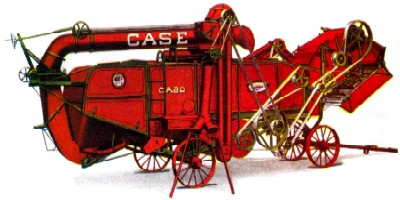 "Where did it come from, the eagle?" The boy told him 'Old Abe's story. "Where did it come from, the eagle?" The boy told him 'Old Abe's story.
Then and there Mr. Case was determined to adopt 'Old Abe' as the symbol of his business just as soon as the unhappy war was over. In 1865, around the time the Civil War did end, Mr Case, founder of J.I. Case & Company began using 'Old Abe’s likeness for his company’s emblem. 'Old Abe' first appeared on the Case Eclipse Thresher. This first logo pictured a Years later, conveying a more global approach, the company decided to portray the likeness on top of a globe with the same words on the face of the globe. The Eagle trademark appeared in advertisements for the company, as well as on the sides of many of its machines and as hood ornaments. Cast iron statues of the logo were placed at Case facilities around the world. This Case 'Old Abe' Eagle logo made its mark wherever men obtain their living from the soil. Just as 'Old Abe' came through the battles of a long hard civil war to make a place for herself among the immortals, so has the J. I Case Company. The Case Co, has endured and survived battles of a different kind and came through the turmoil of more than a century to emerge as one of the great leaders in the agricultural industry, Just as the image of the American Eagle has come to represent and signify to many, prowess, freedom and strength. The name Case is a synonym for dependable and reliable, long lasting machinery. In 1969, the J. I. Case Company introduced a new series of agricultural tractors christened the "Agri-King" line. At the same time, after 104 years, the 'Old Abe' eagle emblem and trademark were retired and replaced by a new corporate symbol, the Casemark.
Old Abe, the Screaming Eagle of the 101st Airborne Division, was wounded twice during the Civil War, 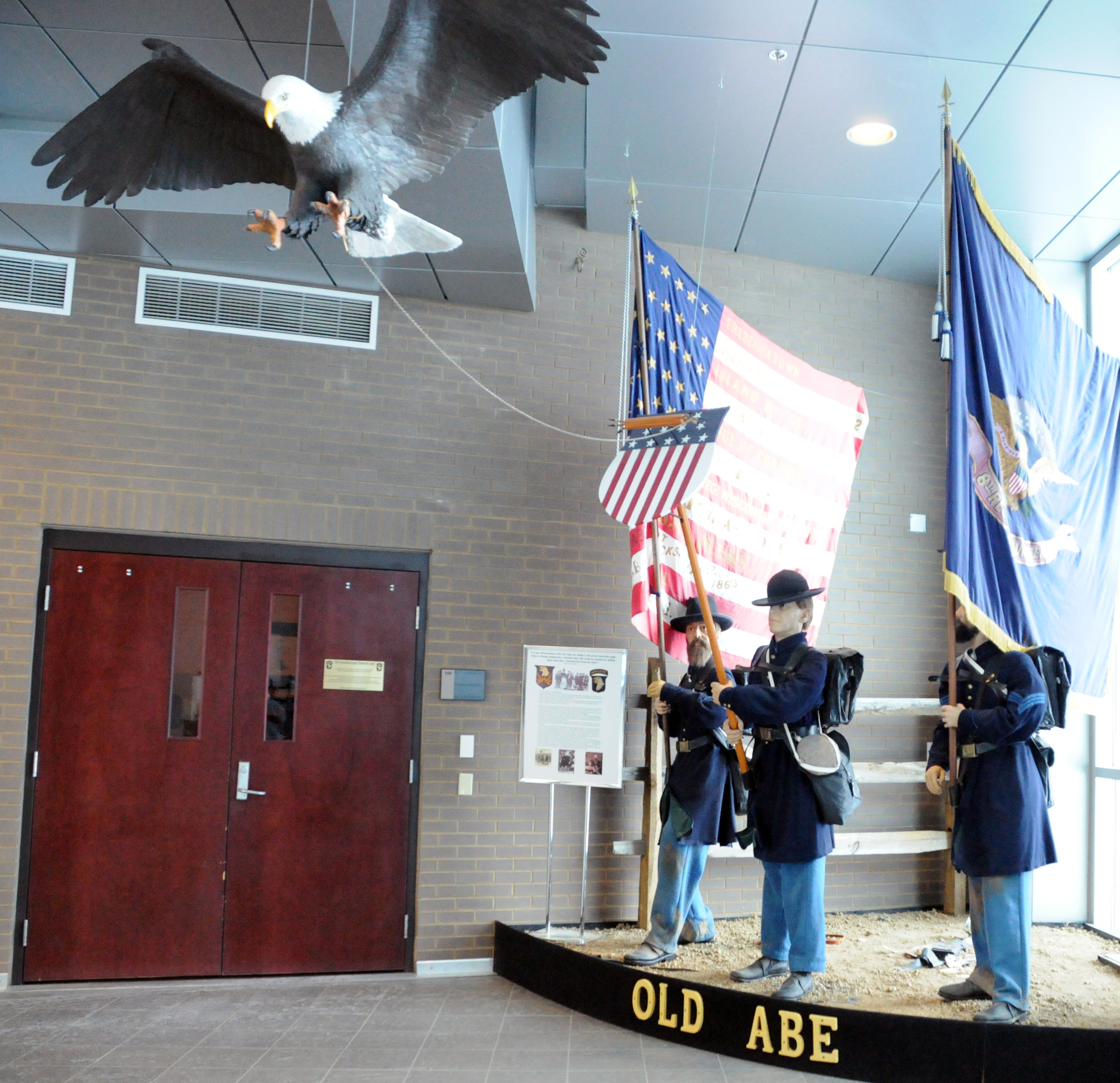 though not seriously. It was in 1921 that the legend of “Old Abe” and the 101st unit designation merged. The 101st Division of the Organized Reserves was born, with headquarters in Milwaukee, Wisconsin.
In 1923, a new black version of a 101st Division insignia was approved for the unit. The former version featured a white eagle over flames on a royal blue shield.
The 101st Wisconsin Division of the Organized Reserves disbanded on August 15th, 1942 the next day the 101st Airborne Division was born. Old Abe was still on the insignia, but it was now topped with the Airborne tab. though not seriously. It was in 1921 that the legend of “Old Abe” and the 101st unit designation merged. The 101st Division of the Organized Reserves was born, with headquarters in Milwaukee, Wisconsin.
In 1923, a new black version of a 101st Division insignia was approved for the unit. The former version featured a white eagle over flames on a royal blue shield.
The 101st Wisconsin Division of the Organized Reserves disbanded on August 15th, 1942 the next day the 101st Airborne Division was born. Old Abe was still on the insignia, but it was now topped with the Airborne tab.
"Old Abe's" head, in profile, has served as the insignia of the 101st Airborne Division (Air Assault). One of the most recognized insignia in the Army, the Screaming Eagle patch made its official debut in 1942. The patch featured a white eagle’s head with a gold beak on a black shield topped with a crescent shaped Airborne tab. A large-scale diorama of the 8th Wisconsin's Color Guard, complete with 'Old Abe,' is on exhibit in the atrium of the division headquarters building at Fort Campbell, Kentucky. The Screaming Eagle insignia of the 101st Airborne Air Assault Division is perhaps the most famous shoulder sleeve insignia in the United States Army. A replica of 'Old Abe' the screaming eagle, also hangs in the division’s museum at Fort Campbell, Kentucky.
|


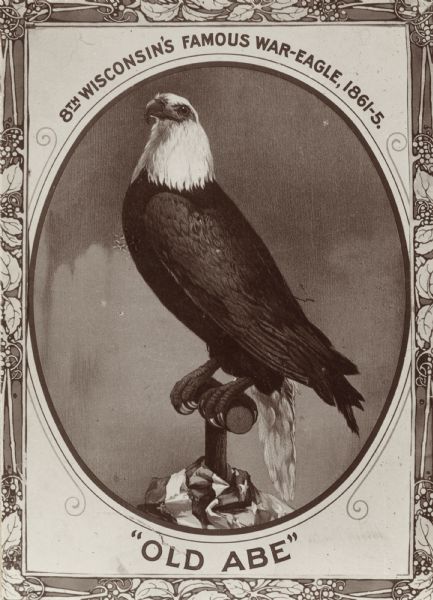
 and heritage. The Case Eagle 'Old Abe' is far more than merely a trademark. She is a character out of history, a bird with a personality and a story all her own.
and heritage. The Case Eagle 'Old Abe' is far more than merely a trademark. She is a character out of history, a bird with a personality and a story all her own.
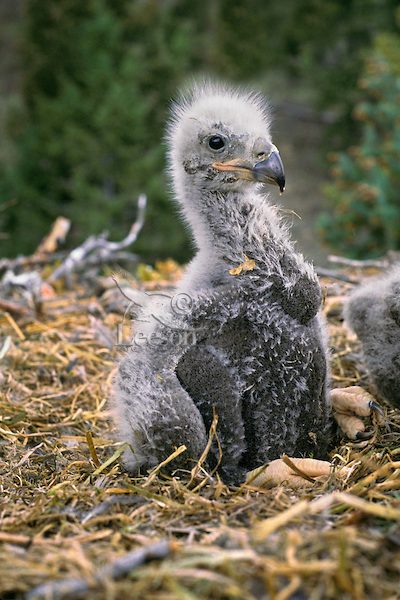 just set out on their annual sugar making pilgrimage. Atop a great pine along the trail was a nest of mud and sticks and in the nest, an eaglet. The Indians felled the tree and took the female eaglet captive. The bird was still too young to fly.
just set out on their annual sugar making pilgrimage. Atop a great pine along the trail was a nest of mud and sticks and in the nest, an eaglet. The Indians felled the tree and took the female eaglet captive. The bird was still too young to fly.
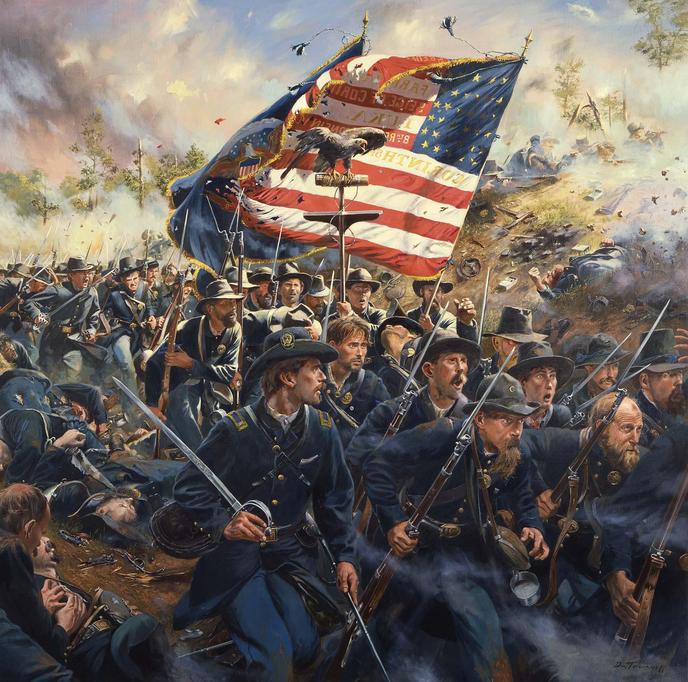 our 16th President, Abraham Lincoln. Thereafter Eagle and Company were to make each other famous. Once she had joined Company C, 'Old Abe' became a legend almost overnight. Gifted with remarkable intelligence, she became a soldier among soldiers, more than a mascot, but an inspiration to the men around her.
our 16th President, Abraham Lincoln. Thereafter Eagle and Company were to make each other famous. Once she had joined Company C, 'Old Abe' became a legend almost overnight. Gifted with remarkable intelligence, she became a soldier among soldiers, more than a mascot, but an inspiration to the men around her.
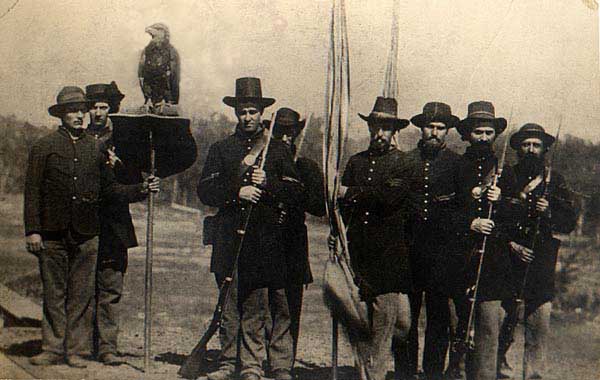 During one skirmish, the 8th Wisconsin, with 'Old Abe', was in the thick of the fighting. In Oxford, Tennessee, the regiment was accosted by a southern girl who scornfully exclaimed: "Oh! See that Yankee Buzzard," enraging the men, drawing a verbal response from the 8th's ranks that caused her to retreat hastily to her house. This was a name by which southern civilians and soldiers referred to 'Old Abe'. Under orders from their officers, Confederate troops made numerous attempts to kill or capture the eagle, but they never succeeded.
During one skirmish, the 8th Wisconsin, with 'Old Abe', was in the thick of the fighting. In Oxford, Tennessee, the regiment was accosted by a southern girl who scornfully exclaimed: "Oh! See that Yankee Buzzard," enraging the men, drawing a verbal response from the 8th's ranks that caused her to retreat hastily to her house. This was a name by which southern civilians and soldiers referred to 'Old Abe'. Under orders from their officers, Confederate troops made numerous attempts to kill or capture the eagle, but they never succeeded.
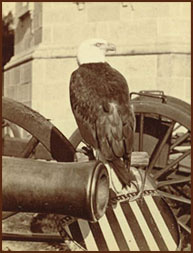 contingent of 70 8th Wisconsin veterans marched 'Old Abe' to the state capitol and presented her to Governor James Lewis. 'Old Abe' was donated to the people of Wisconsin by the loving comrades alongside whom he had fought for almost four years.
contingent of 70 8th Wisconsin veterans marched 'Old Abe' to the state capitol and presented her to Governor James Lewis. 'Old Abe' was donated to the people of Wisconsin by the loving comrades alongside whom he had fought for almost four years.
 The Wisconsin War Eagle's post-war life was punctuated by frequent nation-wide travel in support of veteran reunions, patriotic gatherings, Soldier relief benefits, and special exhibitions during which she achieved a rock star-like status. In 1876, 'Old Abe' again toured the country as part of America's Centennial Exposition.
The Wisconsin War Eagle's post-war life was punctuated by frequent nation-wide travel in support of veteran reunions, patriotic gatherings, Soldier relief benefits, and special exhibitions during which she achieved a rock star-like status. In 1876, 'Old Abe' again toured the country as part of America's Centennial Exposition.
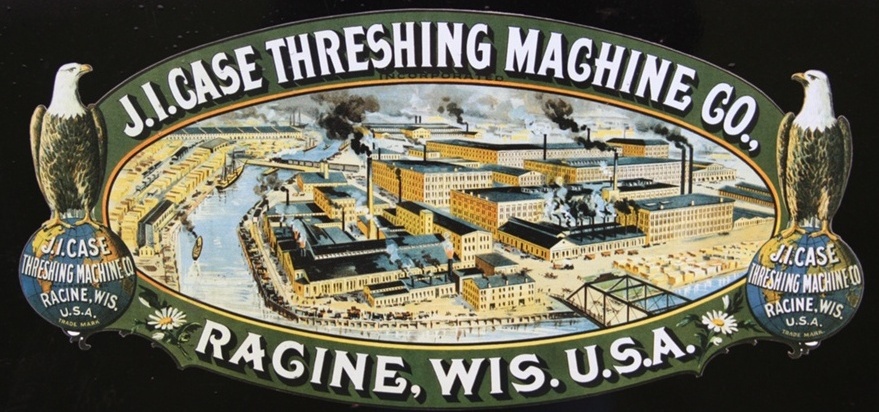
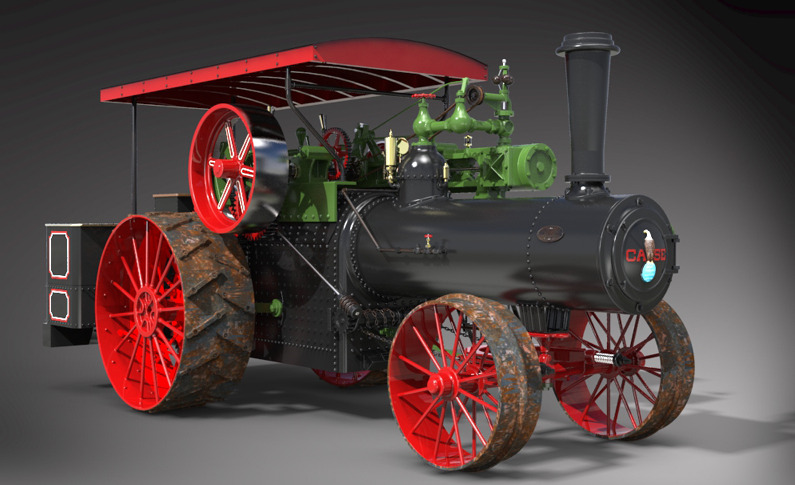 likeness of 'Old Abe' on a branch with the words, “J.I. Case Threshing Machine Co.” and the company’s home, Racine, Wisconsin, printed on the branch itself. This began her career as the most famous bird in agricultural history as the trademark of the J.I. Case Company.
likeness of 'Old Abe' on a branch with the words, “J.I. Case Threshing Machine Co.” and the company’s home, Racine, Wisconsin, printed on the branch itself. This began her career as the most famous bird in agricultural history as the trademark of the J.I. Case Company.
